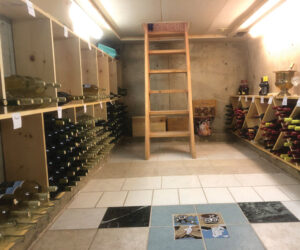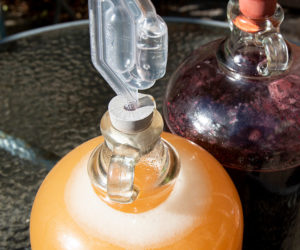 If you are just starting out in the world of home winemaking, choosing the right kind of fermenter is a tricky decision. It may seem simple, however, you do not want to take risks with the fermentation process, and you also do not want to break the bank on unnecessary equipment. Fortunately, there are a wide variety of fermenters available for you to choose from, and with the right research you will find the best model for your homewinery.
If you are just starting out in the world of home winemaking, choosing the right kind of fermenter is a tricky decision. It may seem simple, however, you do not want to take risks with the fermentation process, and you also do not want to break the bank on unnecessary equipment. Fortunately, there are a wide variety of fermenters available for you to choose from, and with the right research you will find the best model for your homewinery.
What you need
The right fermenter for the beginning winemaker will be able to accommodate the volume of wine you wish, plus some headspace, without being inordinately bulky. It must be able to keep air out and keep wine in. It should be durable and easy to use, without breaking the budget. Glass or Polyethylene terephthalate (PET) plastic demijohns and carboys or plastic buckets are the best options for beginning winemakers.
Styles
When first starting out, glass or PET demijohns and carboys serve as easy go-to options for practicality. They are relatively inexpensive, they are inert, and the buyer can choose from a wide selection of sizes and colors. When choosing a color, consider your storage plans. Tinted glass is preferable for storing wine, especially if the wine is going to be exposed to light, as the brown or green tint lessens the harmful effects of UV rays. PET fermenters are made from a material that is virtually unbreakable, which is great for beginners in a home winery, and is also light and easy to move.
You will need a variety of sizes of demijohns or carboys, depending on the volume you intend to produce, to make sure wine is always topped up. Fortunately, demijohns range in size from 1 to 14 gallons (5 to 54 L), and carboys usually vary from 3 to 6 gallons (12 to 23 L). When choosing a size, remember to accommodate for the wine’s expansion during fermentation. Your container should only be about 75% full during the initial vigorous fermentation. The extra headspace is to allow for foaming during the vigorous part of fermentation, otherwise, wine will spew out.
Plastic vats are popular among beginners for their inexpensiveness and their ease to keep clean. When choosing a plastic container, remember that it must be made from non-toxic, food-grade plastic. Sometimes this can be confusing because of labeling, so the best thing to do is to go to a winemaking supply store and purchase a bucket specifically for winemaking. Your supply store will be willing to drill the necessary holes and give you advice. Keep in mind that some plastics cannot be used for storing wine for long periods of time; it can be permeable, which will allow the wine to oxidize.
Stainless steel tanks come in a wide variety of types, volumes, and prices, making them a more versatile and customizable alternative, but also more expensive. With the right know-how, there is no reason for beginners to ignore their advantages if you can afford it. Tanks most commonly come in both closed-top and open-top (floating lid) varieties. Closed-top tanks have a fixed capacity, while open-top tanks allow for variable capacities and the ability to easily punch down the cap (grape solids above the juice) during fermentation.
These styles differ most prominently on levels of cost and functionality. In addition to the container itself, there are a variety of fermentation locks, bungs, tubes and other equipment to consider. Focus on the details that are most important to you as the winemaker, asking for help from your local wine supply store if you can. Remember, there is nothing wrong with starting basic and working your way up to those picturesque oak barrels when you are ready to expand.






